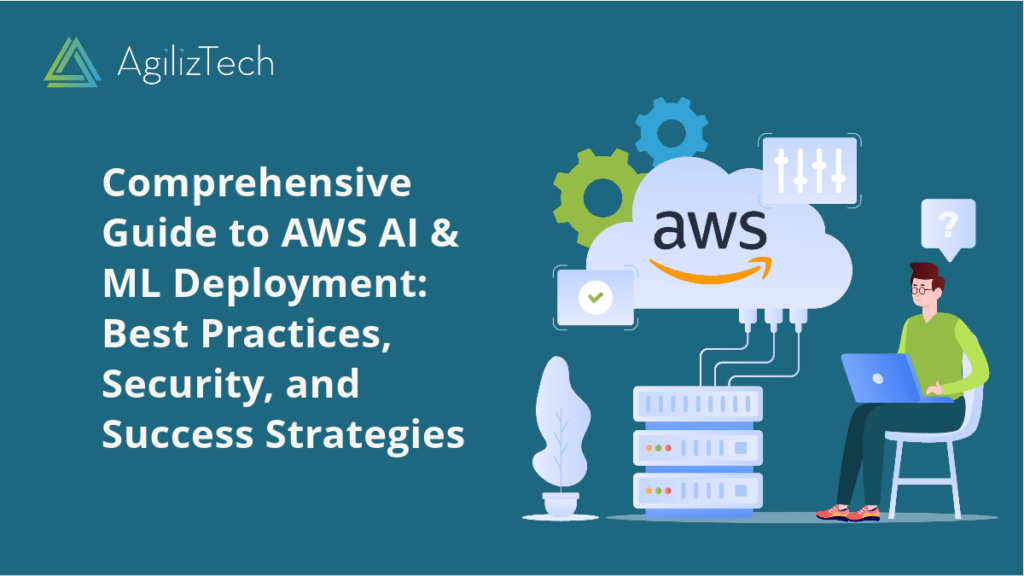
AWS AI and ML Deployment: Security Best Practices
This blog post will share some best practices for securing your AWS AI and ML deployment, covering features, benefits, use cases, and getting started.
As organizations increasingly harness the power of Artificial Intelligence (AI) and Machine Learning (ML) to drive innovation and gain competitive advantages, ensuring the security of AI and ML deployments becomes paramount. As a leading cloud provider, AWS offers a robust suite of services for AI and ML, but safeguarding these deployments against evolving threats is a multifaceted challenge.
AWS AI and ML services enable you to build, train, and deploy intelligent applications quickly and easily. However, you must also ensure that your AI and ML deployments are secure and compliant with your organization’s policies and standards.
Features and Benefits of AWS AI and ML Deployment Security
AWS AI and ML deployment services provide several features and benefits that help you secure your deployments, such as:
- Encryption: You can encrypt your data at rest and in transit using AWS Key Management Service (KMS) or your own encryption keys. You can also use AWS Certificate Manager (ACM) to manage SSL/TLS certificates for your endpoints.
- Identity and Access Management (IAM): You can use IAM to control who can access your AWS AI and ML resources and what actions they can perform. You can also use IAM roles to grant your applications or users temporary permissions.
- Audit and Compliance: AWS CloudTrail can monitor and log all API calls made by or on behalf of your AWS AI and ML services. You can also use AWS Config to track the configuration changes of your resources and AWS Security Hub to view security findings and alerts across your AWS accounts.
- Firewall and Network Protection: AWS WAF protects your web applications from common web attacks, such as SQL injection and cross-site scripting. You can also use AWS Shield to protect your applications from distributed denial-of-service (DDoS) attacks and AWS VPC to isolate your network resources.
Use Cases for AWS AI and ML Deployment Security
Some common use cases for securing your AWS AI and ML deployments are:
- Data Privacy: You can use encryption, IAM, and firewall features to protect the privacy of your data from unauthorized access or leakage. For example, you can use Amazon SageMaker to train and deploy machine learning models with encrypted data and endpoints, or use Amazon Comprehend Medical to analyze health data with HIPAA compliance.
- Fraud Detection: You can use audit and compliance features to detect and prevent fraud or abuse of your AI and ML applications. For example, you can use Amazon Fraud Detector to create custom fraud detection models with CloudTrail integration or use Amazon Rekognition to verify the identity of your users with facial recognition.
- Threat Detection: You can use firewall and network protection features to detect and mitigate threats to your AI and ML applications. For example, you can use Amazon GuardDuty to monitor your AWS accounts for malicious activity or use Amazon Macie to discover and protect sensitive data in S3 buckets.
Getting Started with AWS AI and ML Security
To get started with securing your AWS AI and ML deployments, you can follow these steps:
- Review the security best practices for each AWS AI and ML service you use or plan to use. You can find the security documentation for each service on the AWS website.
- Enable encryption, IAM, CloudTrail, Config, Security Hub, WAF, Shield, and VPC for your AWS AI and ML resources. To configure these features, you can use the AWS Console, CLI, SDKs, or CloudFormation templates.
- Test Regularly monitor your AWS AI and ML deployments for security issues. You can use tools like Amazon Inspector, Amazon CodeGuru, or Amazon DevOps Guru to scan your code and infrastructure for vulnerability or performance issues.
Conclusion
Securing your AWS AI and ML deployments is essential for ensuring the trustworthiness and reliability of your intelligent applications. By following the best practices outlined in this blog post, you can leverage the features and benefits of AWS AI and ML services to build secure and compliant solutions for your business needs.


